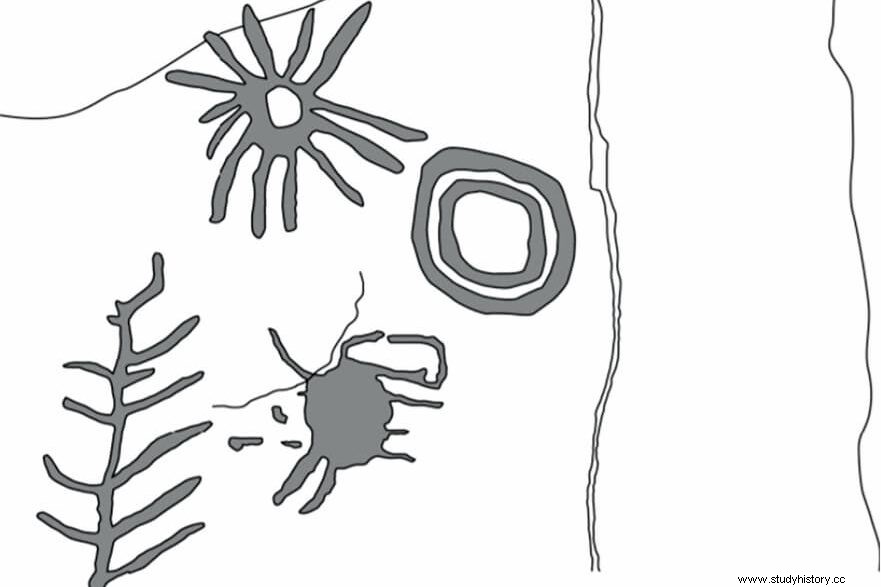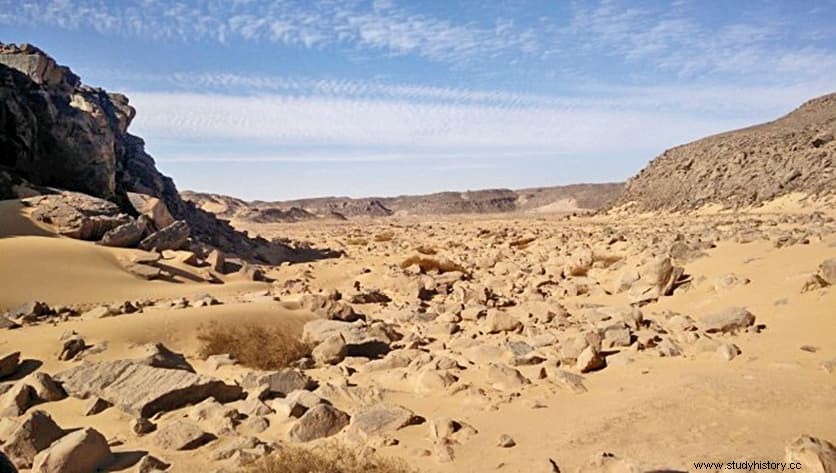Researchers from the University of Bonn together with the Egyptian Ministry of Antiquities deciphered the world's oldest place-name sign, an inscription from the time of the emergence of the Egyptian state at the end of the fourth millennium BC, found in the Wadi el Malik to the east from Aswan, an area that has not yet been explored archaeologically. The inscription bears four hieroglyphics, reading:Dominion of the Scorpion King of Horus .
This ruler named 'Scorpion' was a prominent figure in the phase of the emergence of the first territorial state in world history , says Professor Dr. Ludwig D. Morenz, an Egyptologist at the University of Bonn. The ruler lived around 3070 BC, but the exact dates of his reign and the length of his reign are not known. The name Scorpion it is written along with three other hieroglyphs in a rock inscription discovered more than two years ago in a lateral wadi of the Wadi Abu Subeira east of Aswan:Dominion of the Scorpion King of Horus . A circular hieroglyph indicates that it is a place name. This makes it the oldest known place-name sign in the world says Morenz.
There are very few sources on the political, social and economic conditions in which people lived more than five thousand years ago. This is precisely why the new rock inscription discovery is so valuable says the Egyptologist. The very early use of the cultural practice of writing in this rather remote location is unusual for the fourth millennium BC. Despite its brevity, the inscription opens a window into the world of the emergence of the Egyptian state and the culture associated with it. According to Morenz:For the first time, the process of internal colonization in the Nile Valley is made more visible by writing .

According to the researcher, Egypt was the first territorial state in the world. There were government systems elsewhere before, but these were much smaller Morenz says. It has long been known that the north-south extension of Egypt at that time was already about 800 kilometers. In fact, several rival population centers merged into the new central state Morenz says. Royal estates, known as dominions, were founded on the outskirts to consolidate the pharaonic empire.
An administration had already developed during the fourth millennium, as can be seen from the titles of the officials and from the taxes and fees. These duties are proof of socio-economic dependencies and are based on control, hierarchy and a special power of the ruler as Horus-God and at the same time earthly equivalent. The boundaries between symmetrically and asymmetrically conceived dependencies seemed to be quite fluid at the time Morenz says. This meant that the symmetric principle of give and take could change to an asymmetric one of strong exploitation.
Various economic entity names (domains) are known from smaller text carriers, such as freight delivery labels, cylinder seals, and vessel labels. The rock inscription makes a royal domain tangible as a concrete archaeological site for the first time.
In addition to various rock carvings, other early inscriptions were discovered here and were found alongside pottery from this period. This area is still in the early stages of archaeological investigation Morenz says. The researchers see this as an opportunity to take a closer look at the momentous process of the emergence of the first state of the world. This included the expansion and securing of rule on the fringes of the Nile Valley and the consolidation of the then new type of kingship.

For several years, scientists from the Department of Egyptology at the University of Bonn have been working together with Abdelmonem Said and Mohamed Abdelhay from the Aswan Office ("Taftish") of the Egyptian Ministry of Antiquities. The research team had already documented several rock carvings dating back to the Neolithic.
The study is presented as a book, the first volume of the new KATARAKT series. Aswan Archaeological Working Papers , recently founded by the Department of Egyptology at the University of Bonn.
